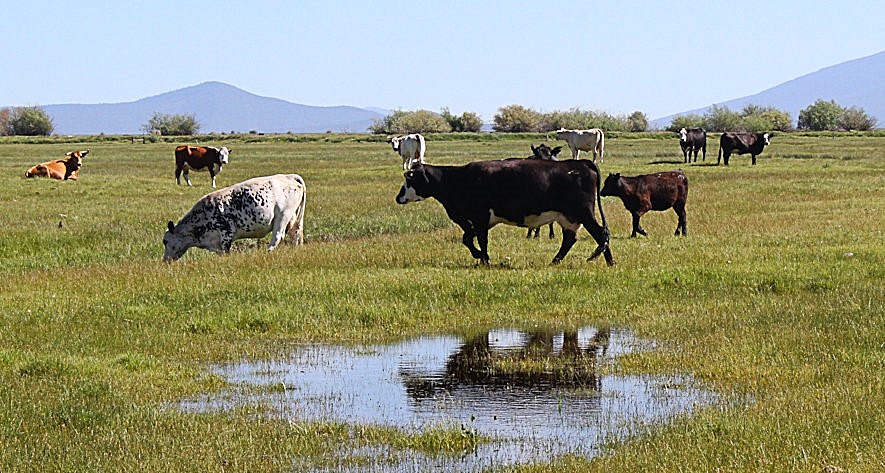The BLM’s resource management plan and maps of the region show that two-thirds of the land inside the 1.35-million acre monument is in some sort of protected status, withdrawn from mineral development.
posted by Marjorie Haun
Deseret News, Environment reporter, Amy Joi O’Donoghue, took a deep dive into the layers of federal ‘protections’ currently governing various areas and features within the boundaries of Bears Ears National Monument, which was unilaterally created by President Obama last December. Environmentalist special interests seeking to close off as much land as possible to resource development, and giant outdoor recreation corporations, such as Patagonia and Keen, seeking the dollars that come with masses of tourists intent on a desert adventure of one sort or another, warned that Bears Ears could be protected only through a federal monument designation. Conversely, those who actually live, have jobs, and regularly recreate there have insisted that Bears Ears is already ‘protected’ by varying federal mandates to the point of being overly-restricted. In the following piece, O’Donoghue explores the jungle of federal protections, many redundant, some contradictory, and copious by any standard, which governed the area prior to Obama’s midnight monument designation of December 28, 2016.
Amy Joi O’Donoghue
Deciphering protections inside Bears Ears monument designation
SALT LAKE CITY — When Interior Secretary Ryan Zinke announced a preliminary recommendation that contemplates shrinking the boundaries of the Bears Ears National Monument, one of the key points he emphasized is that some of the land is already subject to special management restrictions.
Zinke’s interim report released Monday notes there are 11 wilderness study areas inside the monument that comprise 381,000 acres and are managed by the Bureau of Land Management. The lands have to be in the same or better condition than they were 41 years ago to ensure Congress has the ability to invoke permanent wilderness protection.
That year is significant, 1976, when Congress passed the Federal Lands Policy Management Act that set up the majority of Utah’s wilderness study areas — vast amounts of land that have remained in limbo since then.
There is also the Dark Canyon Wilderness of 46,353 acres on Forest Service land administered by that federal agency that has permanent wilderness status and is managed as such.
The BLM’s resource management plan and maps of the region show that two-thirds of the land inside the 1.35-million acre monument is in some sort of protected status, withdrawn from mineral development.
That includes special recreation management areas, wilderness study areas and 48,000 acres of lands managed for wilderness and identified for protections after an exhaustive 1999 inventory of lands with wilderness characteristics inside Utah.
 Bureau of Land Management | Aaron Thorup, Bureau of Land Management
Bureau of Land Management | Aaron Thorup, Bureau of Land Management
What can you do in a wilderness study area and what’s restricted?
In 2012, the BLM released a revised and more aggressive policy on management of the study areas, which allows nonmotorized, primitive recreational activities such as backpacking, horseback riding, rafting, fishing and hunting.
Zinke’s preliminary recommendation asks Congress to clarify management practices of study areas within a monument’s boundaries because he says the land uses under each designation may be at odds with each other.
In a study area, mechanized access is generally prohibited, except on already established routes, including mountain biking. Outright wilderness designations, such at Dark Canyon, prohibit mechanized access altogether, including equipment for fighting wildfires or watershed restoration — unless an emergency exception is granted.
Within the Bears Ears monument boundaries there are also special recreation management areas that include Grand Gulch and Cedar Mesa that have been withdrawn from potential mineral development and in some instances overlap lands that are being managed to protect wilderness characteristics.
No one appears to be particularly fond of wilderness study areas, but for vastly different reasons.
The Wilderness Society’s Phil Hanceford, who is conservation director for the BLM Action Center, said those areas may be managed as wilderness now — but that could change with an act of Congress.
“They are absolutely vulnerable to going away,” Hanceford said, adding that Zinke’s preliminary directive for Congress to review their intent doesn’t assuage any of those fears.
Rep. Rob Bishop, R-Utah, chairman of the House Committee on Natural Resources, called the study areas obnoxious because they include such wide discretion.
“A wilderness designation that is congressionally done is clearly wilderness,” Bishop said.
Study areas just have to have some “characteristic,” which he maintains can evolve from practically any landscape if it is left unattended for long enough.
“That is why it is such a concern for people in the counties and in states around the West,” Bishop said. “Nobody who lives east of Denver knows what a (wilderness study area) is or cares about it.”
Hanceford said if Utah had ever had a wilderness bill to permanently move the study areas into designated wilderness, the state might be ahead in the conservation game like some of its neighbors.
In Arizona, for example, there are only two wilderness study areas that total 46,000 acres. The majority were protected as permanent wilderness — 47 of them — at 1.4 million acres.
Utah, in contrast, has 86 wilderness study areas that encompass 3.2 million acres.
Bishop countered that the study areas are problematic in that they are de facto wilderness that subjugate multiple uses — putting other uses of the land like recreation or grazing at a disadvantage.
“I think Zinke is wise, very wise, to ask Congress to clarify these designations that should never have been been done by executive fiat,” he said.
If a good chunk of the land inside the Bears Ears monument footprint already has management restrictions for wilderness quality, why is an official designation so critical for monument supporters?
Free Range Report
[wp_ad_camp_1]



